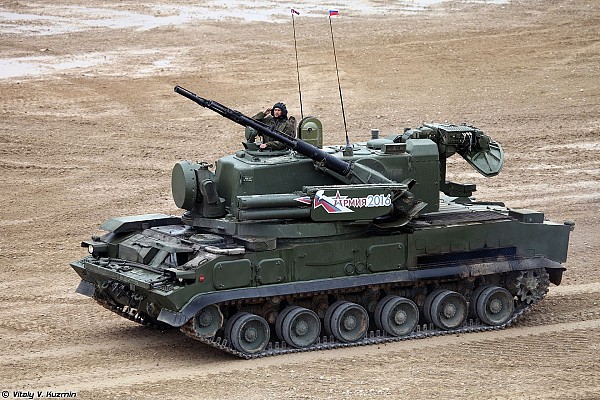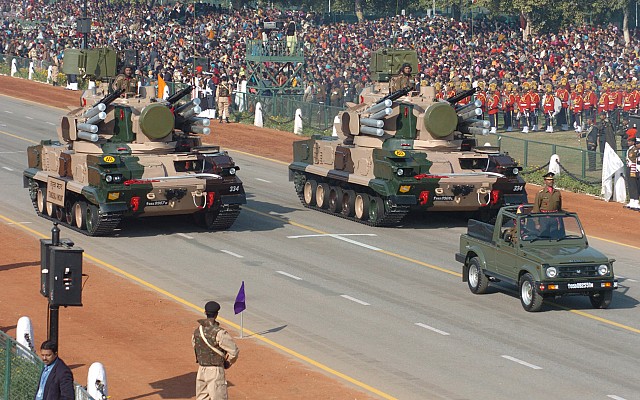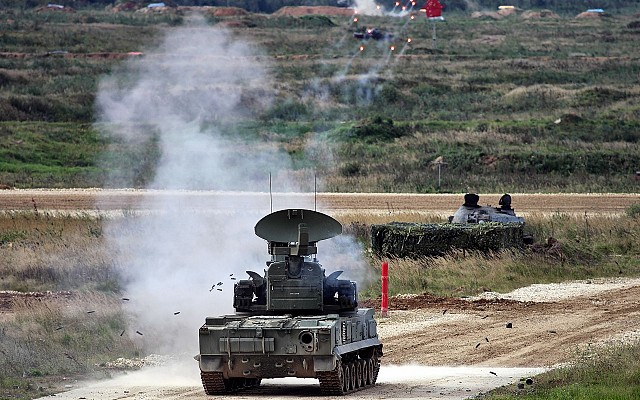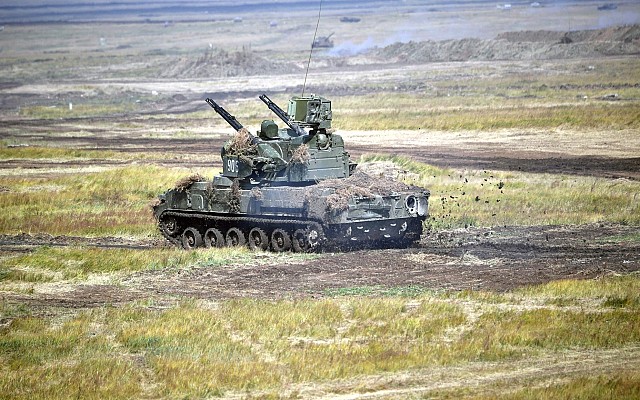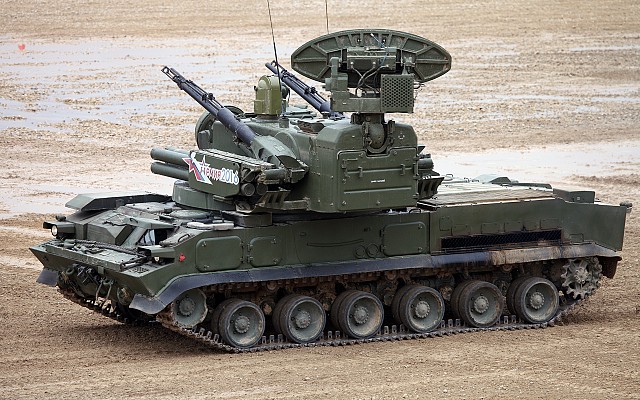2S6 Tunguska
NATO: SA-19 Grison
Overview
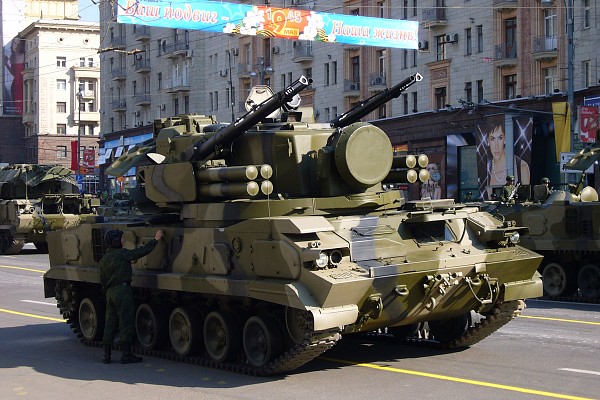
2S6 Tunguska
2S6 Tunguska on parade in Russia in 2008.
Source: Leonid Dzhepko -
© GNU Attribution Share Alike license
Self-propelled SAM system
Russia - UMZ / Ulyanovsk Mechanical Factory
2K22, 9K22 (GRAU index for system)
Russia
India
Description
Introduction
The 2S6 Tunguska is a self-propelled anti-aircraft gun and SAM system of Soviet origin. It was developed in the 1970's as a more capable successor to the widely used ZSU-23-4 Shilka. The main role of the Tunguska is to protect armor and infantry units against helicopters and ground attack aircraft. The Tunguska was to be more than twice as effective in combat than its predecessor. Therefore it uses larger caliber projectiles and missiles were integrated later during the design.
Layout
The Tunguska has a somewhat similar layout as the German Gepard, which entered service with West Germany while the Tunguska was in developement. The Tunguska is based on a tracked chassis. The turret is located in the front and the engine and drivetrain are located at the rear. A double barrel 2A38M autocannon is located on each side of the turret. Eight ready to launch surface to air missiles are fitted alongside the guns.
Firepower
The Tunguska is armed with both guns and missiles. The two twin barrel 2A38M autocannon fire 30mm projectiles. The combined cyclic rate of fire is about 5.000 rpm. The Tunguska can fire its guns on the move against aerial targets. The missiles can only be launched while halted.
Sensor systems
The Tunguska features a tracking radar at the front of the turret. At the rear of the turret the surveilance radar is located. When in use the radar rotates continuously. When on the move the surveillance radar is stowed behind the turret. The tracking radar can track targets up to an altitude of 3.5 km. The surveillance radar has a range of 18 km.
Mobility
The tracked chassis provides good mobility in the field. This allows it to keep up with the tracked combat vehicles it is meant to protect. The water-cooled V12 diesel engine provides up to 780 hp. The maximum speed is 65 km/h on roads.
Protection
The armor protects the Tunguska from small arms fire and shell splinters. This allows the Tunguska to be used near the front line. However the Tunguska remains vulnerable to most kinds of direct fire. The standoff range of its missiles increases the survivability against combat helicopters with long range anti-tank missiles and ground attack aircraft. NBC protection and fire supression systems are present.
Users
The Tunguska entered service with Soviet forces in the mid 1980's. At present Russia is the main user. The Tunguska has been exported to various nations. Notable operators include India, Ukriane and Syria. In Soviet service the Tunguska was mostly used in platoons of 6 vehicles, whereas the previous ZSU-23-4 Shilka was used in platoons of 4 vehicles.
Variants
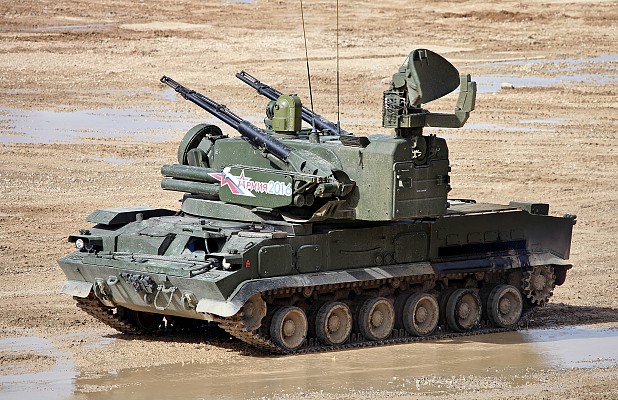
2S6 Tunguska
Russian 2S6 Tunguska with search radar in raised position.
Source: Vitaly V. Kuzmin -
© GNU Attribution Share Alike license
List of 2S6 variants
List of components
Details
Media
Related articles
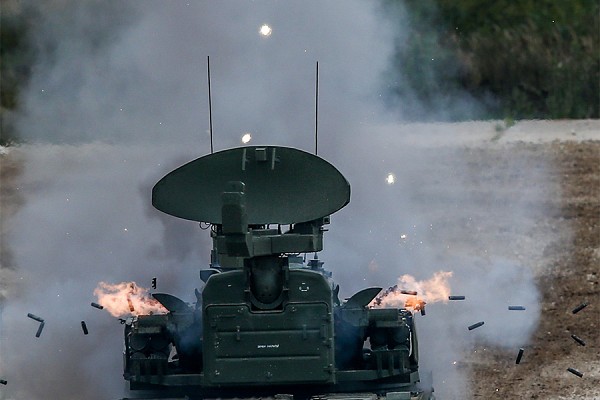
30mm 2A38
The Tunguska is armed with two twin barrel 30mm 2A38M autocannon.
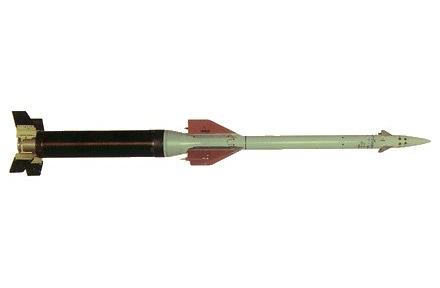
9M311
The Tunguska has eight 9M311 missiles with radio command guidance ready to fire.
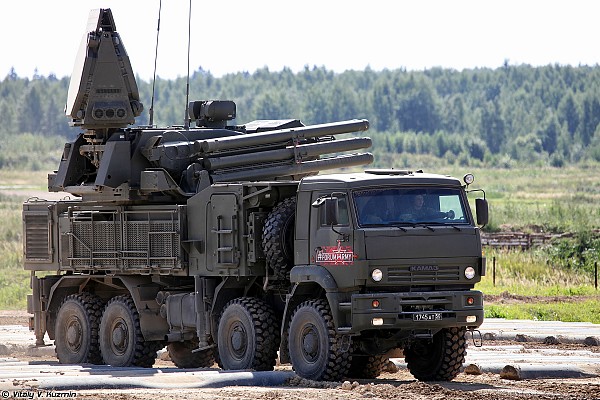
96K6 Pantsir-S
The Pantsir is a further development of the Tunguska. It features newer missiles with langer range and the radar and fire control systems are improved. Unlike the Tunguska the Pantsir is based on a wheeled chassis and is often employed as a highly mobile static system.

